White residue on dishes and in the dishwasher
 A dishwasher must wash dishes flawlessly, because we spend a lot of money on different tablets, salts, rinse aids, and powders. But often the output we get is not what we expected. Plates and pots are covered with white coating and stains, and what’s more, even the walls of the dishwasher also have such a coating. Let's find out what are the reasons for this unpleasant phenomenon.
A dishwasher must wash dishes flawlessly, because we spend a lot of money on different tablets, salts, rinse aids, and powders. But often the output we get is not what we expected. Plates and pots are covered with white coating and stains, and what’s more, even the walls of the dishwasher also have such a coating. Let's find out what are the reasons for this unpleasant phenomenon.
Reason one: water hardness
The main reason why a white coating appears on the walls of the dishwasher or on the dishes themselves is hard water. Such water has a high content of calcium salts, iron and other impurities, so when it dries, a white coating appears. For this purpose, dishwashers have a built-in ion exchanger with a reservoir filled with resin. The ion exchanger is responsible for softening the water, but to restore its ability to do this, you need to regularly add special salt to the tank.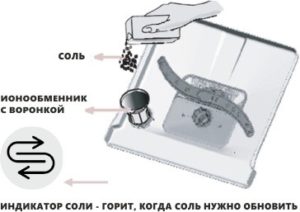
If you do not add salt, then after several cycles you may not notice anything, thinking that the machine washes everything perfectly without salt. But it's not that simple! For some time, the ion exchanger will indeed soften water well, but then it will do it worse, and in the absence of salt for a long time it will even break down.
The presence of salt is not everything. It is necessary to adjust the salt consumption in the dishwasher, which depends on the water hardness in your region. Setting water hardness is described in detail in the instructions for each machine, so be sure to read it before use.
For your information! Some expensive dishwashers have a sensor for automatically detecting water hardness; the machine itself will determine the hardness and select a program.
Reason two: quality and dosage of detergents
A very common reason when a white coating appears on dishes after washing is the incorrect dosage of detergents, especially in cases where the region has soft water. A white coating on dishes can be left by:
- poorly washed off powder;
- poorly dissolved tablet;
- insufficient amount of rinse aid or lack of it.
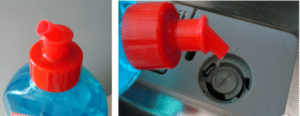 Dishwasher powder does not wash out well if you add too much of it or the powder itself is of poor quality. When using powder, be sure to use a rinse aid. It is important to set the rinse aid consumption correctly; according to users, this can be done most accurately by trial and error. Both too much and too little rinse aid is bad. With a deficiency, a white coating appears; with an excess, excessive shine and an iridescent film appear.
Dishwasher powder does not wash out well if you add too much of it or the powder itself is of poor quality. When using powder, be sure to use a rinse aid. It is important to set the rinse aid consumption correctly; according to users, this can be done most accurately by trial and error. Both too much and too little rinse aid is bad. With a deficiency, a white coating appears; with an excess, excessive shine and an iridescent film appear.
It is important not only how much rinse aid is supplied to the wash cycle, but also where it is poured. Some people manage to pour the rinse aid along with the powder. As a result, the rinse aid is washed out already at the washing stage, and should be supplied after the first rinse, before the final rinse cycle.
Low-quality tablets do not wash off well, so it is worth replacing the detergent with a new one from a different manufacturer. Some note that the use of individual products gives better results, arguing that combined tablets have an average dosage of substances.In real conditions, everyone has different water hardness, people load the dishwasher differently, and dishwashers are also different, they hold different amounts of dishes, and use different amounts of water. Detergents can be dosed, choosing the optimal dose for your dishwasher.
Important! Do not use hand-washing detergents or untested homemade detergents in your dishwasher. The result of such experiments can be not just a white coating and stains on the dishes after washing and drying, but also failure of the equipment.
Some dishwasher users note that a white residue remains on the dishes when salt gets into the chamber of the machine. For example, they accidentally spilled it when they poured it into the ion exchanger, or the lid of the ion exchanger was not tightly closed, or maybe the salt was poured along with the powder into the detergent compartment.
Reason three: malfunctions, violation of operating rules
The appearance of plaque and streaks on dishes after washing in the dishwasher may be due to technical malfunctions. Such malfunctions include:
- jamming of the lid of the compartment for powder and tablets, as a result of which the powder is poorly washed out or the tablet remains undissolved;
- clogged dishwasher filters;
- clogging of the holes in the sprinklers and a decrease in water supply pressure.
You can fix these problems on your own, without involving a technician. First, you need to thoroughly clean your dishwasher. First, thoroughly rinse the strainers and then run a dry wash. with special detergent, which will wash away plaque from the walls of the car, clean all holes from limescale, and rid the washing machine of an unpleasant odor.
Important! A complete cleaning of the machine must be carried out at least twice a year, regardless of the intensity of use.
As for the compartment lid, in some Chinese-assembled machines the lid does not fit well and sticks when opening. To solve the problem, you can replace such a compartment or sharpen the cover with a file to adjust the size.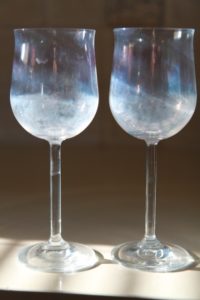
The compartment lid may not open properly due to improperly placed dishes, which prevents this from happening. Even if the lid opens, if the dishwasher is placed incorrectly and overloaded, the dishes may not be washed properly, and do not be surprised that a white residue remains on the dishes after the end of the wash.
If you constantly add salt, use good and proven detergents, dose them correctly and follow the rules for operating the dishwasher, but a white residue still remains in it, then the cause may be a breakdown of the ion exchanger. This happens rarely. In models with a water hardness sensor, this problem may occur if the sensor breaks down. It is difficult to diagnose such a breakdown; it is better to entrust it to a professional.
Thus, there may be many reasons why a white residue remains in the washing machine after washing. Most of these reasons can only be determined experimentally by replacing detergents, changing their dosage, or completely cleaning the machine. If the cause cannot be determined, you must contact the service center.
Interesting:
Reader comments
- Share your opinion - leave a comment


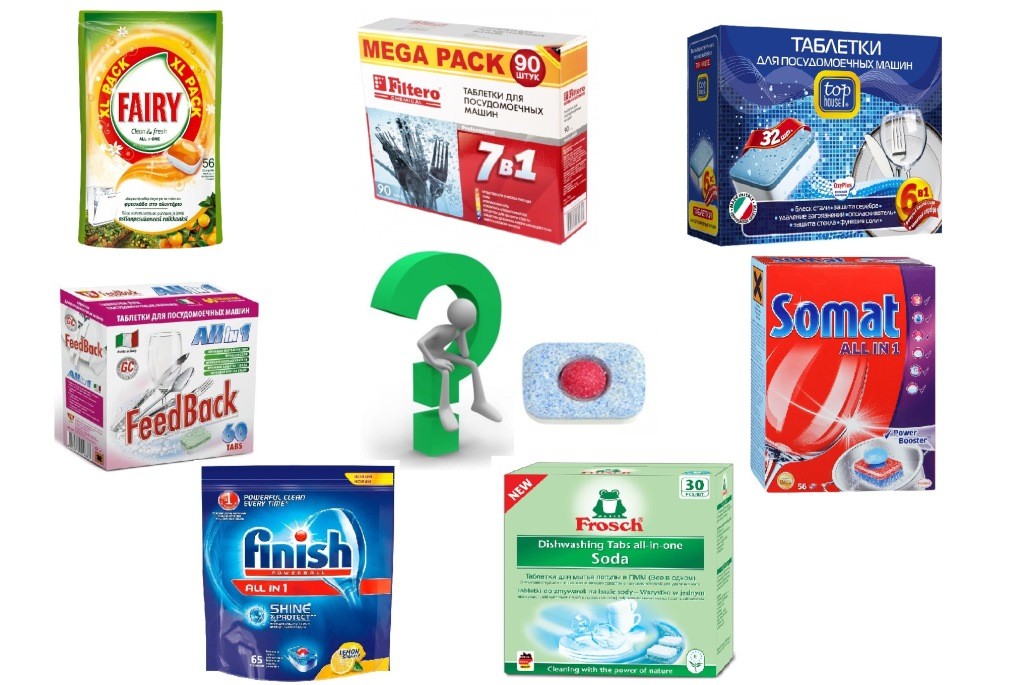



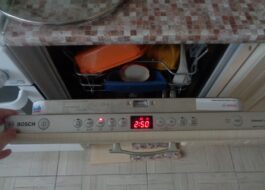














Add a comment